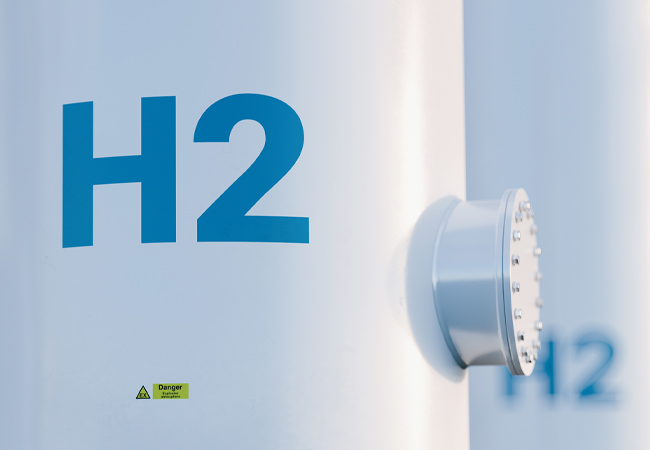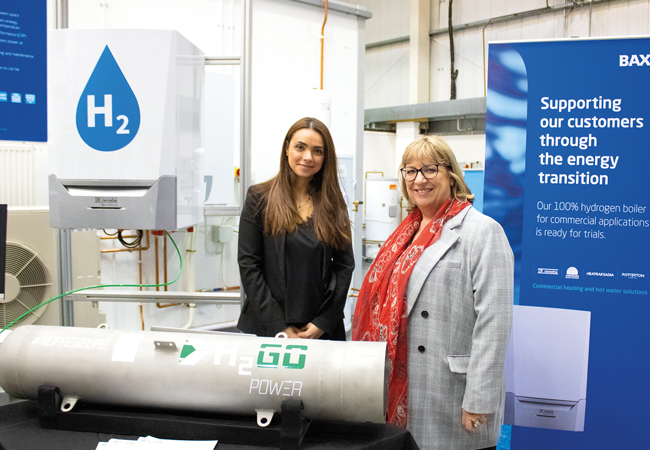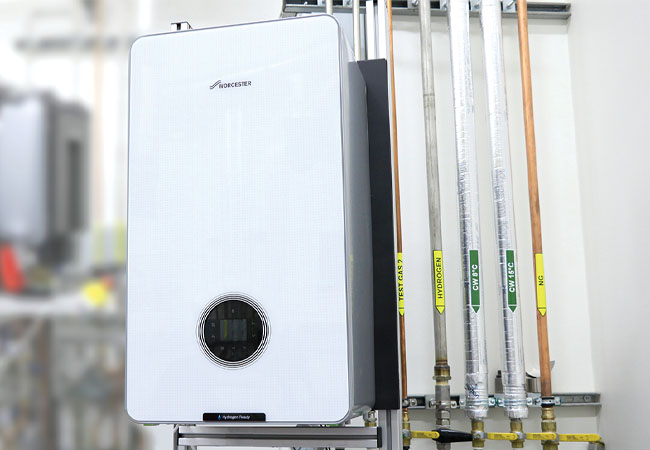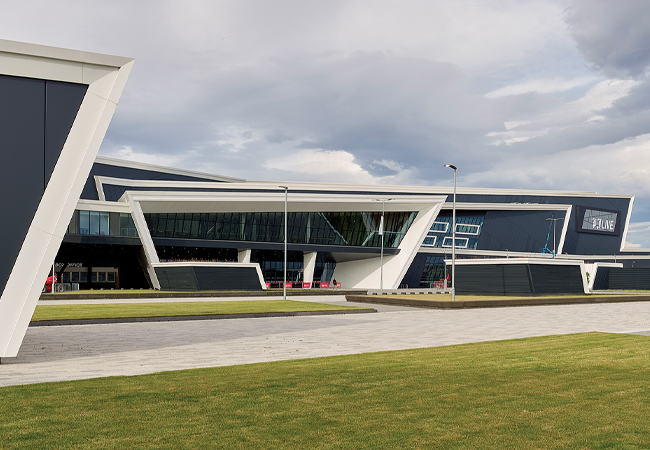
There is significant interest in the decarbonisation of heat by converting the UK natural gas grid to hydrogen. Of the 23 million homes connected to the network, around 90% have boilers for space and water heating, and about half have gas hobs and fires.
Although domestic heat makes up more than half of the UK heat demand, the provision of space heating, hot water and cooking for commercial and industrial properties accounts for more than 25%.
Any network conversion to hydrogen will need to cater for larger-scale commercial and industrial heating, too.
Overall provision of heat for space heating, hot water and cooking in our homes and businesses accounts for more than 35% of UK energy consumption, according to BEIS. The government has signalled its intention for affordable, low carbon energy through the Clean Growth Strategy, and achieving this is likely to require almost full decarbonisation of heat in buildings.
There has been increasing interest in the potential conversion of the UK gas grid to hydrogen. As intimated in the Prime Minister’s 10-point plan, any conversion of the network is likely to start by blending natural gas with up to 20% hydrogen.
Hydrogen has a high energy density per unit mass, but a low volumetric energy density, so a 20% blend only equates to around 7% decarbonisation. There are advantages to this approach, however. It will enable the hydrogen supply chain to be ramped up and it has a minimal effect on appliance performance – domestic and most commercial appliances are already tested for ignition performance with 23% hydrogen as part of certification for use on natural gas. In practice, 20% is likely to be a limit for blending because of certification and technical issues. After that, it will be a jump up to 100% hydrogen.
It is estimated that there are around 1.5 million commercial gas appliances
For the past four years, the government – through the Hy4Heat programme – has been exploring the feasibility of developing appliances that can run on 100% hydrogen, and a number are undergoing trials. Recently, commercial appliances have also been developed.
For a given delivery pressure, hydrogen and natural gas provide a similar energy flux when injected through a burner. This is characterised by the Wobbe Index and means that – from an energy production metric, at least – natural gas and hydrogen are relatively comparable. The key benefit of hydrogen over natural gas is that, at the point of combustion, there are no carbon emissions. Initial findings from the Hy4Heat programme also suggest that NOx emissions – a major air pollutant – are lower for hydrogen than natural gas.
Technical hurdles
There are technical hurdles to deal with. Hydrogen has a greater flammability range and this poses a risk of ignition before the point of combustion. It also has a greater flame speed and is more prone to light-back, where the flame can propagate back upstream.
These challenges can be overcome by: changing the gas and air mixing point and method; smaller burner port diameters; multiple ports; and specifying UV flame detection, except in open spaces, where fast-acting thermocouples suffice. Hydrogen flames are less visible and produce more water vapour (see panel, ‘How hydrogen and natural gas differ’).
The engineering challenges for developing commercial hydrogen appliances are similar to those faced with domestic appliances, except on a larger scale. On some commercial catering appliances, ignition is manual and requires opening the appliance door, but this is likely to be acceptable for hydrogen appliances, as the gas tends to disperse quickly.
It is estimated that there are around 1.5 million commercial gas appliances in the 2 million or so non-domestic premises in the UK1 – less than 5% of the number of domestic appliances. As with homes, space-heating appliances are the most prevalent, with around 500,000 boilers in the range 30kW to 1MW. It is estimated that 80% of these boilers are <150kW,1 so commercial hydrogen boiler development has focused on delivering heat through a cascade of domestic boilers.
This provides a relatively cost-effective and low-risk method of demonstrating that hydrogen boilers can deliver heat at commercial scale. Cascade systems have resilience benefits in the event that one boiler fails, although they may need higher down-turn rates than single units in homes. In the long term, it may prove necessary to develop single hydrogen boilers at commercial scale.
The commercial sector also has appliances that are rarely found in homes – including warm air and radiant heaters. Enertek has developed hydrogen variants that are all being certified for use in commercial premises.
Across all hydrogen-appliance development, it is now generally agreed that ‘hydrogen-ready’ appliances could lessen significantly the burden of a nationwide conversion.
These would be developed with hydrogen in mind, but back-fitted in the factory to run on natural gas up to the point of changeover. If a switchover occurred, a standardised conversion kit could be used to convert them in situ, rather than having to remove the natural gas appliances and replace them with hydrogen versions.
Under the Hy4 Heat programme, domestic boilers are being piloted in unoccupied test homes. An occupied trial is expected to go live at the end of 2022 and last until March 2027. Parallel work carried out under the Ofgem-funded H21 project will verify the gas-distribution network aspects. Commercial and industrial end users are likely to be brought into the trial programme before 2025.
How hydrogen and natural gas differ
- Hydrogen flames are much less visible than natural gas flames (especially when the appliance is cold) and they have an orange tinge (rather than blue with natural gas) as the appliance becomes warm. In most modern appliances this is irrelevant, because flames cannot be seen by the user. Where flames are seen, such as in catering appliances, visibility is improved by a flickering effect and ignition is noticeable by the sound of flames cross-lighting between ports, confirming ignition has occurred.
- Hydrogen produces 60% more water vapour for the same amount of energy delivered than natural gas. Most existing condensate drains are oversized, so should cope without difficulty, and flue duct materials are resistant to water vapour. During cooking, the extra moisture content may or may not benefit the food in an oven, but water vapour emitted from the gas burner is deemed insignificant when compared with steam from a boiling pan on the hob.
- Compared with natural gas, hydrogen is more prone to leakage, although it is significantly more buoyant, so any leak will tend to disperse more rapidly. The intention is to use the game odorant as natural gas.
- Natural gas appliances tend to use ionisation sensors to detect the presence of ignition. In the absence of hydrocarbons in the exhaust, these will not work, so alternative mechanisms – such as UV or infrared detection – will need to be used.
About the authors
Paul Needley is managing director at Enertek International and Stephen Livermore is senior consultant at FrazerNash Consultancy.
References:
1 Hy4Heat WP5: Understanding commercial appliances for UK Hydrogen for Heat demonstration, ERM, Oct 2020





